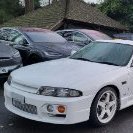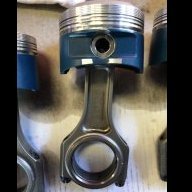What Intank Pump Will Deliver The Most Flow? Nismo?
Announcements
-
Similar Content
-
Latest Posts
-
Do u know how to identify the rods are rb25 or neo ones? Can u look into the pics and tell me is they de or de neo ones. Its confusing becoz my motor has de neo head but block is 25de 75t, so really confusing me about rods, crank.
-
Are you talking about the oil squirters? There is only one place for them to go. Yes, you have to drill the holes. Yes you have to obtain the correct oil squirters (I presume there is some sort of aftermarket option available, because original turbo ones are going to be a diminishing resource).
-
I thought you didn't let mechanics, especially those with no idea, work on your car any more? Wouldn't that mean it won't be an issue in your case?
-
Is it possible to get them dilled and taped if its not there. Same for oil feed and turbo drain, is it easy to get them taped or i should get the supply from somewhere else?
-
By joshuaho96 · Posted
I'm not doubting it does something, there's clearly a reason why Nissan bothered with it on the transmission/diff/transfer case but it's more just the effort of finding a drain plug that isn't going to have some unexpected design problem that makes me lazy. For example even the Nismo branded ones here spec way less than the factory 20 N-m. They say only torque to 10 N-m. That is getting absolutely trashed the moment you take it to any mechanic who isn't familiar with the specific requirements and assumes it should be torqued to factory spec.
-







Recommended Posts
Create an account or sign in to comment
You need to be a member in order to leave a comment
Create an account
Sign up for a new account in our community. It's easy!
Register a new accountSign in
Already have an account? Sign in here.
Sign In Now